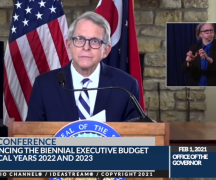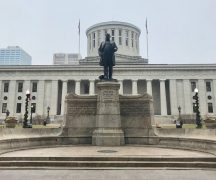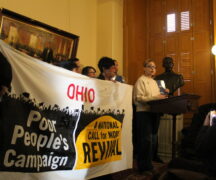By DAVID DUPONT
BG Independent News
Both Bowling Green State University and the Wood County District Public Library got good news from the recently signed state budget.
The university anticipates getting $81.16 million, said Sheri Stoll, BGSU’s chief financial officer. That’s a 3.35-percent increase over last fiscal year.
Stoll did note the figures are preliminary. “That does mean it’s subject to adjustment.”
The increase is credit to the improvements the university has made in retaining and graduating more of its students. Half the state funding is based on the number of students who graduate, and while another 30 percent is based on the number of courses successfully completed.
Stoll said only two state universities received greater increases.
“We are very, very appreciative and very pleased,” she said.
The amount also reflects a 2-percent increase in how much the legislature allocated in the state budget for supporting higher education. The budget calls for spending $1.55 billion, about $30.6 million more.
“It’s absolutely incumbent to keep up the work we’re doing and do it well and do it better. We have to,” Stoll said.
She said the funding from the state reflects the commitment by both the governor and the legislature to support higher education. “This works as a partnership, and we value that partnership and recognize our responsibility to perform well,” she said.
State funding contributes about 25 percent to the university’s $304.3 million budget. The largest share of revenue, 67 percent, comes from student tuition and general fees. The remainder comes from investment income, special course and program fees, and other miscellaneous fees.
The state’s libraries are also seeing a bump up in their funding stream.
The state’s Public Library Fund will be set at 1.7 percent of the state’s General Revenue Fund, up from 1.68 this year. The rate was scheduled to dip to 1.66 percent if the legislature hadn’t acted.
Library Director Michael Penrod cautioned that he’ll have to wait and see if any tax reform in the final budget offsets the PLF’s percentage increase.
“Since the Public Library Fund (PLF) receives a percentage of the revenue that flows into the General Revenue Fund (GRF), any changes in those flows of revenue that might either increase or decrease the size of the GRF would result in a corresponding increase or decrease in the PLF,” he explained in an email.
Penrod and other library officials have been lobbying to increase the percentage.
The Ohio Library Council would like to see the formula return to 2.2 percent of general fund revenues. That was the rate when the formula was established in 2007. However, the recession of 2008 took a heavy toll on library funding.
The library relies on the state for just over half its funding with the rest generated by a local levy and private fundraising efforts.
The budget also includes a provision to distribute an additional $916,705 to make up for the lower payments in July because final passage of the budget was delayed.
Bowling Green school district and city officials are still studying the budget to see how it will affect them.





